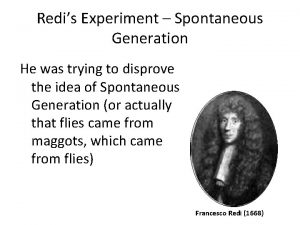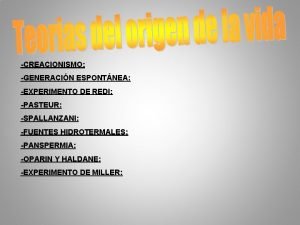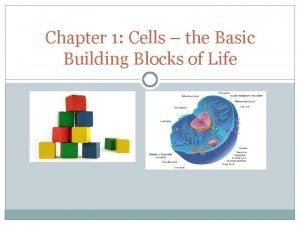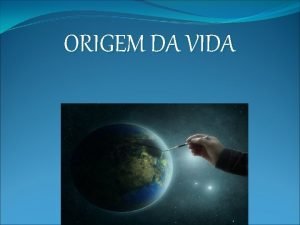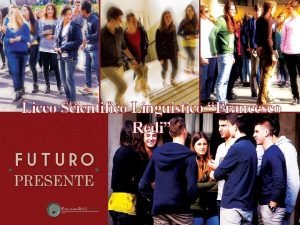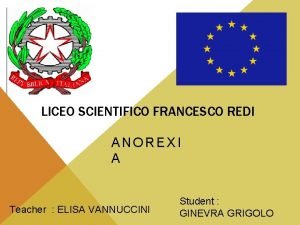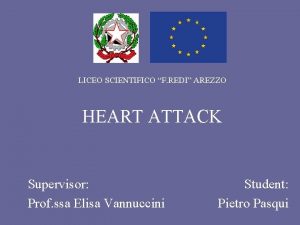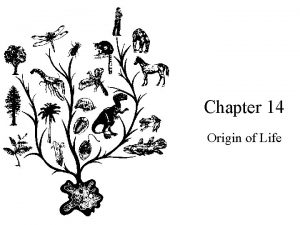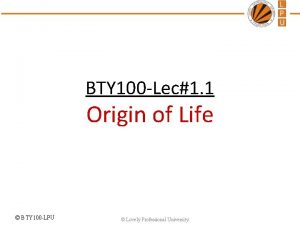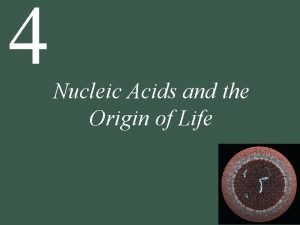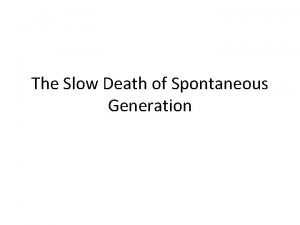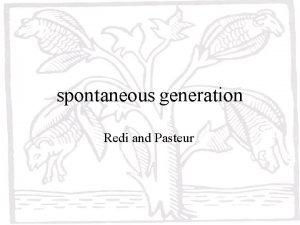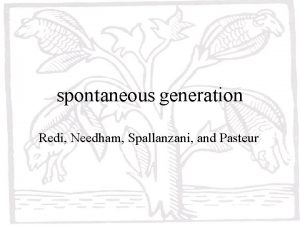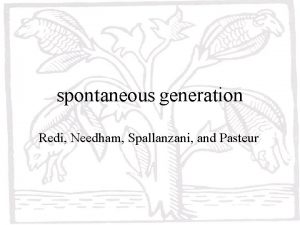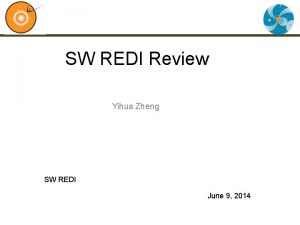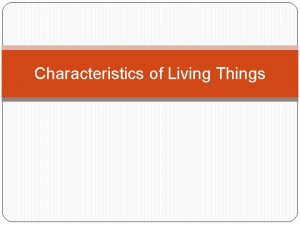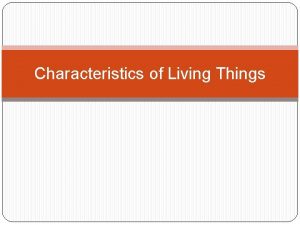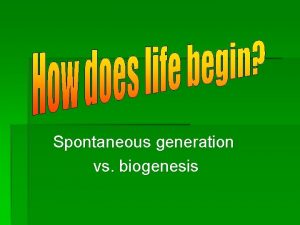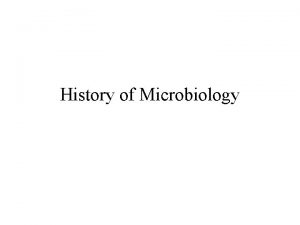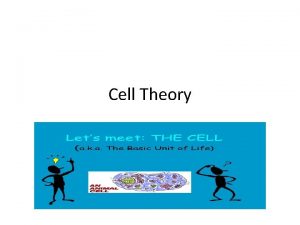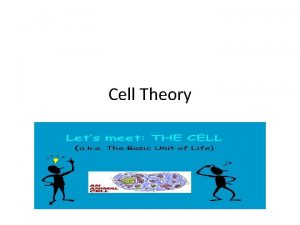Spontaneous Generation Francesco Redi Characteristics of Living Things















- Slides: 15

Spontaneous Generation

Francesco Redi

Characteristics of Living Things

1. All living things are made of cells Cells are the basic building blocks of all living things. Cells come from other cells Unicellular: single celled organisms (bacteria) Multicellular: organisms made of many cells (humans) Display organization Are composed of the same basic elements: C H O N

1 -5

2. Living things grow and develop • Birth • develop- become more complex Lifespan: the maximum length of time an organism can live

3. All living things can move • Animals move to find food and shelter. Movement can be the difference between life and death. • Plants do not move, but they bend toward sunlight. • All living things also have internal movement of substances (food, water, waste, etc. )

4. Living things reproduce • Sexual reproduction: Two partners required (male and female) • Most are multicellular • Asexual reproduction: Only one parent, meaning the organism has all it needs to reproduce on its own • Bacteria, fungi, and some plants • Budding / Binary fission

Reproduction continued… • In both types of reproduction, the offspring receive a set of special chemical “blue prints” or plans that determine the characteristics of that living thing, which will again be passed on the next generation. • These “blue prints” of these characteristics is also known as DNA

5. Living things respond to their environment • Stimulus: signal to which an organism reacts (change in environment – Ex. )When the season changes from winter to spring there is much more dust and pollen in the air. • Response: some action, movement, or change in behavior due to stimulus -Ex. ) you sneeze to keep germs, pollen and dust from entering your body.

6. Living things adapt Adaptations come about through evolution. Evolution is the process by which a species changes through time. 1 -11

7. All living things obtain and use energy • Metabolism: The sum total of all chemical reactions that occur in living things- produces energy and basic materials needed for life processes • Ingestion: To take in food and nutrients • Digestion: Break down of food • We get the energy we need by combining the foods you eat with the oxygen you breathe (respiration). • Excretion: Getting rid of waste materials

8. All living things are homeostatic • Homeostasis is the ability of an organism to maintain relatively constant internal conditions. An example is temperature regulation in the human body. All organ systems contribute to homeostasis.

In order to be considered living, it is a must that an organism possesses all of these 8 characteristics, not just some. .

For instance…a computer. . HAS: organization, uses energy, maintains homeostasis but. . . DOESN’T HAVE: cells, grow or develop, reproduce
 Redis experiment
Redis experiment Experimentos de spallanzani
Experimentos de spallanzani Francesco redi occupation
Francesco redi occupation Francesco redi cell theory
Francesco redi cell theory Biogenese
Biogenese Microscope optique
Microscope optique Liceo sportivo taranto
Liceo sportivo taranto Liceo scientifico francesco redi
Liceo scientifico francesco redi Liceo redi arezzo
Liceo redi arezzo Living and nonliving things venn diagram
Living and nonliving things venn diagram What is the smallest living unit
What is the smallest living unit Name 7 life processes of living things
Name 7 life processes of living things Louis lerman experiment conclusion
Louis lerman experiment conclusion Disproving spontaneous generation
Disproving spontaneous generation Disproving spontaneous generation
Disproving spontaneous generation The slow death of spontaneous generation
The slow death of spontaneous generation
